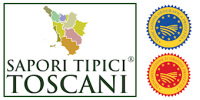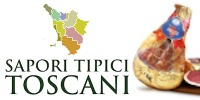Our network:
Sunday 22 December 2024
Accademia dei Fisiocritici
Founded in 1691 by Pirro Maria Gabrielli, a professor of medicine and botany, the Accademia dei Fisiocritici was originally housed in the library of the Spedale di Santa Maria della Scala. In 1694 the academy moved to the Casa della Sapienza, then the seat of the university and now the Biblioteca Comunale degli Intronati, where it collaborated with the university according to an agreement that had been drawn up between the two institutions.
The term fisiocritici, used to define the members of the academy, derives from the union of the Greek words physis (nature) and criticos (judges).
In the 18th century an earthquake, coupled with a succession of political disasters in Siena, heralded a period of decline for the academy, which only ended in 1816 when it moved to its current headquarters, a former Camaldolese monastery donated to it by the Grand Duke Ferdinand III. Originally built in the 12th century, the monastic buildings were refurbished by the academy to house its library, archives and natural history museum.
The academy’s natural history museum dates back to when the academy was founded in 1691. From the second half of the 18th century the museum’s collections grew considerably thanks to a number of private donations, among which were the bequests of the doctor and natural history professor at Siena University Giuseppe Baldassarri and that of Biagio Bartalini. Since 1996 the museum became a member of the Sistema dei Musei Senesi body of Senese museums, known today as the Fondazione dei Musei Senesi.
The museum is divided into three sections: zoology, geology and palaeontology. The zoology section is housed in the upper floors of the monastery and includes collections assembled in the 19h century, featuring molluscs, insects, birds, mammals, fish and reptiles. The geology section is housed in the lower floors of the monastery and includes an assortment of minerals and rocks, including samples of a meteorite that fell near Lucignano d’Asso in and an unusual collection of terracotta mushrooms. The palaeontology section comprises fossils from all eras, including Palaeozoic ferns, ammonites and Jurassic belemnites.
The academy also houses a library that includes some 800 manuscripts and 15,000 books and pamphlets dating from the 15th century to the present day.
Exhibitions are held periodically at the academy, which also organises conferences and meetings for up to 155 people in its Aula Magna, a finely frescoed hall decorated by Vincenzo Dei in 1816 with The Triumph of Science. At least twice a year the academy hosts public scientific assemblies focussing on research carried out by academicians.
The academy also publishes the periodical Atti dell’Accademia delle Scienze di Siena detta dé fisiocritici, the Memorie series, the scientific periodical Etruria natura and the Quaderni scientifico-naturalistici del Sistema Musei Senesi.
The term fisiocritici, used to define the members of the academy, derives from the union of the Greek words physis (nature) and criticos (judges).
In the 18th century an earthquake, coupled with a succession of political disasters in Siena, heralded a period of decline for the academy, which only ended in 1816 when it moved to its current headquarters, a former Camaldolese monastery donated to it by the Grand Duke Ferdinand III. Originally built in the 12th century, the monastic buildings were refurbished by the academy to house its library, archives and natural history museum.
The academy’s natural history museum dates back to when the academy was founded in 1691. From the second half of the 18th century the museum’s collections grew considerably thanks to a number of private donations, among which were the bequests of the doctor and natural history professor at Siena University Giuseppe Baldassarri and that of Biagio Bartalini. Since 1996 the museum became a member of the Sistema dei Musei Senesi body of Senese museums, known today as the Fondazione dei Musei Senesi.
The museum is divided into three sections: zoology, geology and palaeontology. The zoology section is housed in the upper floors of the monastery and includes collections assembled in the 19h century, featuring molluscs, insects, birds, mammals, fish and reptiles. The geology section is housed in the lower floors of the monastery and includes an assortment of minerals and rocks, including samples of a meteorite that fell near Lucignano d’Asso in and an unusual collection of terracotta mushrooms. The palaeontology section comprises fossils from all eras, including Palaeozoic ferns, ammonites and Jurassic belemnites.
The academy also houses a library that includes some 800 manuscripts and 15,000 books and pamphlets dating from the 15th century to the present day.
Exhibitions are held periodically at the academy, which also organises conferences and meetings for up to 155 people in its Aula Magna, a finely frescoed hall decorated by Vincenzo Dei in 1816 with The Triumph of Science. At least twice a year the academy hosts public scientific assemblies focussing on research carried out by academicians.
The academy also publishes the periodical Atti dell’Accademia delle Scienze di Siena detta dé fisiocritici, the Memorie series, the scientific periodical Etruria natura and the Quaderni scientifico-naturalistici del Sistema Musei Senesi.
Booking.com
• Siena in the Renaissance
• Siena in the Middle Ages
• Siena in Antiquity
• Town Map Siena
• Farm Holidays and Country Houses
• Residence, Apartments
• Bed & Breakfasts
• Historical Residences
• Last Minute Siena
• Restaurants
• Pubs & Wine Bar
• University for Foreigners
• Palazzo Chigi-Saracini
• Palazzo d’Elci degli Alessi
• Loggia della Mercanzia
• Palazzo Sansedoni
• Palazzo Chigi-Zondadari
• Fonte Gaia fountain
• Carthusian Monastery of Pontignano
• Forte di Santa Barbara
• The Duomo – The Cathedral of the Assunta
• Church of the Osservanza
• The Oratory of San Bernardino
• Church of San Francesco
• Short Biography of St Catherine of Siena
• St Catherine Sanctuary
• Church of S. Niccolò al Carmine
• Bologna-Buonsignori museum
• Accademia dei Fisiocritici
• I Musei Senesi
• The Palazzo Pubblico and the Torre del Mangia
• Piazza del Campo
• The Montagnola Senese and the Fortified Village of Sovicille
• The Castles of Belcaro and Quattro Torri
General information
• Town map • Siena in the Renaissance
• Siena in the Middle Ages
• Siena in Antiquity
Transport in town
• Map of Hotels in Siena • Town Map Siena
Transport out of town
• Train services
Where to Stay
• Hotels • Farm Holidays and Country Houses
• Residence, Apartments
• Bed & Breakfasts
• Historical Residences
OFFERS & LAST MINUTE
• Reservation Services Siena • Last Minute Siena
Where to eat and drink
• Disco Dancing • Restaurants
• Pubs & Wine Bar
Education
• Siena University • University for Foreigners
Art and monuments
• Palazzo Piccolomini and Palazzo delle Papesse • Palazzo Chigi-Saracini
• Palazzo d’Elci degli Alessi
• Loggia della Mercanzia
• Palazzo Sansedoni
• Palazzo Chigi-Zondadari
• Fonte Gaia fountain
• Carthusian Monastery of Pontignano
• Forte di Santa Barbara
Art and religion
• Church of Sant’Agostino • The Duomo – The Cathedral of the Assunta
• Church of the Osservanza
• The Oratory of San Bernardino
• Church of San Francesco
• Short Biography of St Catherine of Siena
• St Catherine Sanctuary
• Church of S. Niccolò al Carmine
Museums and galleries
• The Museo Civico • Bologna-Buonsignori museum
• Accademia dei Fisiocritici
• I Musei Senesi
Art and tourist attractions
• Cappella di Piazza • The Palazzo Pubblico and the Torre del Mangia
• Piazza del Campo
• The Montagnola Senese and the Fortified Village of Sovicille
• The Castles of Belcaro and Quattro Torri
Booking.com
• The July and August Palio
• The Contrade
• The Days of the Palio
• The Drappellone
• The Eve of the Palio
• The Corteo Storico Procession
• The Race
• The Patron Saint and Oratory of Each Contrada
• Weekly Appointments in each Contrada from April onwards
• Croce del Travaglio Place
• From Piazza del Campo to the Duomo Along Via di Città
• The Curves of Piazza del Campo
• Costarella dei Barbieri street
• Borgo d’Ovile
• The Terzo of Camollia – main streets
• Casato di Sopra e Casato di Sotto
• Terzo di San Martino district
• The Terzo di Città District - Via Stalloreggi, Via San Quirico
• The Terzo di Città District – The Pinacoteca Nazionale
• Golf courses in Siena and Tuscany
• Wedding in Tuscany - Siena area
• San Casciano dei Bagni
• Chianciano Terme
• Bagni San Filippo
• Bagno Vignoni
• Rapolano Terme - Baths of San Giovanni and Baths of the Antica Querciolaia
• The Countryside around Siena and its Thermal Water Springs
• SkiPass Monte Amiata
• WebCam sul Monte Amiata
• Meteo Monte Amiata
• The Val d’Orcia and Its Main Towns
• Pienza - the old town centre
• Montepulciano - the old town centre
• San Quirico d’Orcia - the old town centre
• Montalcino and the Land of Brunello
• The Abbey of Monte Oliveto Maggiore and the Crete
• The Crete Senesi
• Castellina in Chianti and the Via Chiantigiana Towards Siena
• Siena and Southern Chianti - from the Castle of Montalto to the Castle of Brolio and on to the Castle of Meleto
• The Chianti Hills - Monte Calvo, Monte Luco and Monte San Michele
• Cortona and the Valdichiana
• San Gimignano - The old town centre and its major sights
• The Val d’Elsa - Monteriggioni and Colle di Val d’Elsa
• Along the Old Via Francigena
• Oleum Evo online selling
• Sapori Tipici Italiani buy online now
• il Prosciutto Cotto
The Palio of Siena
• The Origins • The July and August Palio
• The Contrade
• The Days of the Palio
• The Drappellone
• The Eve of the Palio
• The Corteo Storico Procession
• The Race
• The Patron Saint and Oratory of Each Contrada
• Weekly Appointments in each Contrada from April onwards
Sightseeing
• Via di Città (formerly Via Galgaria), Siena’s Most Elegant Street • Croce del Travaglio Place
• From Piazza del Campo to the Duomo Along Via di Città
• The Curves of Piazza del Campo
• Costarella dei Barbieri street
• Borgo d’Ovile
• The Terzo of Camollia – main streets
• Casato di Sopra e Casato di Sotto
• Terzo di San Martino district
• The Terzo di Città District - Via Stalloreggi, Via San Quirico
• The Terzo di Città District – The Pinacoteca Nazionale
What to see & do
• Wedding in Siena • Golf courses in Siena and Tuscany
• Wedding in Tuscany - Siena area
• San Casciano dei Bagni
• Chianciano Terme
• Bagni San Filippo
• Bagno Vignoni
• Rapolano Terme - Baths of San Giovanni and Baths of the Antica Querciolaia
• The Countryside around Siena and its Thermal Water Springs
Monte Amiata
• Monte Amiata - nature tourism the year round • SkiPass Monte Amiata
• WebCam sul Monte Amiata
• Meteo Monte Amiata
Specials - Out of town
• Gift Ideas for traveling • The Val d’Orcia and Its Main Towns
• Pienza - the old town centre
• Montepulciano - the old town centre
• San Quirico d’Orcia - the old town centre
• Montalcino and the Land of Brunello
• The Abbey of Monte Oliveto Maggiore and the Crete
• The Crete Senesi
• Castellina in Chianti and the Via Chiantigiana Towards Siena
• Siena and Southern Chianti - from the Castle of Montalto to the Castle of Brolio and on to the Castle of Meleto
• The Chianti Hills - Monte Calvo, Monte Luco and Monte San Michele
• Cortona and the Valdichiana
• San Gimignano - The old town centre and its major sights
• The Val d’Elsa - Monteriggioni and Colle di Val d’Elsa
• Along the Old Via Francigena
Typical products
• Typical Tuscan flavours • Oleum Evo online selling
• Sapori Tipici Italiani buy online now
• il Prosciutto Cotto









